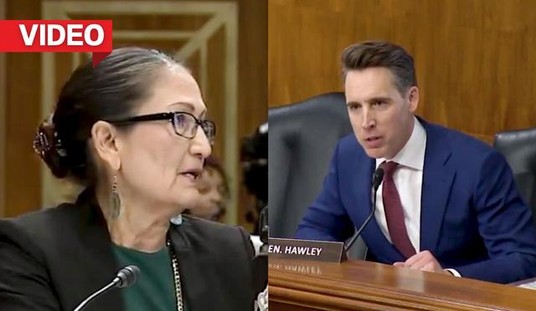As education becomes a major focus of campaigns beyond the local school board level — the Virginia gubernatorial race is a prime example — the Heritage Foundation's Center for Education Policy is out with a new study looking at the impact on school districts that hire a chief diversity officer (CDO) to remedy what are perceived to be systemic inequalities.
Anyone who's worked in or has paid attention to higher education in recent years already knows the damage done to the rising generation that comes with identity-obsessed leftism. It turns out, according to the data gathered and reported by Heritage, school districts in charge of even younger students face similar issues. Simply put, "achievement gaps are growing wider over time in districts with CDOs."
Heritage looked at 554 districts that had at least 15,000 students enrolled as of 2017, which accounted for more than 22.5 million students or roughly 44 percent of all students in public schools that year. Of the districts Heritage analyzed, 39 percent had a CDO on staff.
As Heritage explains:
The primary purpose of CDOs—according to most school district websites—is to help to reduce achievement gaps between students from different backgrounds. Differences in standardized test scores between white and black students, white and Hispanic students, and wealthier and poor students have been large and persistent for decades. By creating a CDO position, office, and staff, districts can claim that they will be able to reduce or eliminate these disparities in outcomes. If this claim were accurate, districts with CDOs should have smaller achievement gaps than districts that do not have CDOs, all else being equal.
Recommended
Except, that's not the story told by the data from students enrolled in districts with a chief diversity officer. Pairing information from a Stanford University project on standardized test scores with its information on which districts have brought on a CDO provides Heritage with an easy way to see if CDOs are living up to their stated goals of closing achievement gaps. Spoiler: They aren't.
Heritage found "From 2009 to 2018, the white–black achievement gap grew by 0.03 grade levels each year in districts with CDOs relative to districts without that position. The white–Hispanic achievement gap grew by 0.02 grade levels more per year over this time period in districts with CDOs versus those without them. And the gap between poor and nonpoor students grew by 0.01 grade level in districts with CDOs compared to those without them."
Lies, damn lies, and statistics you may say. Well, even when heritage controlled for similar district sizes, demographics, resources, and political environments, having a CDO still "significantly and negatively related to both the level and change in white–black achievement gaps. The white–Hispanic achievement gap and the rate of change in that gap, at least for math test scores, continues to be negatively associated with a district employing a CDO even when all of these other factors are controlled. The relationship between a CDO position and achievement gaps between non-poor and poor students ceases to be statistically significant—meaning that one can no longer be confident that the gaps differ from zero, even when other factors are controlled statistically."
The conclusion heritage reaches is one shared by many school choice advocates and concerned parents of students in public schools:
CDOs may be best understood as political activists who articulate and enforce an ideological orthodoxy within school districts. They help to mobilize and strengthen the political influence of small groups of teachers, parents, or students whose preferences may be at odds with the majority of teachers, parents, and students. The creation of CDOs tilts the political playing field against efforts to remove the radical ideology of critical race theory from school curricula and practices.
CDOs do not and cannot promote equality in student outcomes; instead, they create inequities in political power by using taxpayer funds to aid one side in two-sided debates over controversial issues.
Also like many advocates for academic freedom within public school districts and for the students in their care, Heritage issues a call to action, saying "Opponents of critical race theory and other illiberal ideas need to make the case to their local school boards that CDO positions should not be created or expanded in their districts. State legislatures could also guide districts away from creating these types of positions."

























Join the conversation as a VIP Member